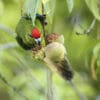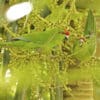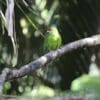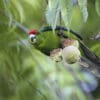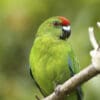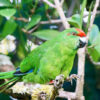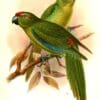Tasman Parakeet
Also known as:
Norfolk Island Parakeet, Green Parrot, Norfolk Island Green Parrot
Also known as:
Norfolk Island Parakeet, Green Parrot, Norfolk Island Green Parrot
DID YOU KNOW?
The Tasman Parakeet feeds in trees and also on the ground, sweeping leaf litter aside with their feet, looking for seeds.

Cyanoramphus

cookii
Size:
30 cm (12in)
Weight:
100 g (3.5oz)
Subspecies including nominate:
two: C.c. cookii, C.c. subflavescens
Colour Adult:
C.c. cookii: Adults bright green with light yellow wash underparts. Forehead, crown, lores and patch behind eye red. Upper wing coverts green. Primary coverts and outer webs of primaries violet-blue. Under wing coverts yellow-green. Red patch on either side of rump. Tail above dark green with yellow edges, undertail dusky grey. Beak blue-grey. Eye red. Female slightly smaller, less red behind eye, smaller bill.
C.c. subflavescens: Medium-sized green parrot with a crimson cap and eye stripe. Yellower plumage and less extensive red markings on the head.
Colour Juvenile:
C.c. cookii: Eye brown. Tail shorter than in adults. Red markings on head less apparent.
C.c. subflavescens: Not recorded.
More Information:
Content Sources:
CITES
Avibase
Wikipedia – Lord Howe Parakeet
Cornell Lab of Ornithology/Birds of the World
A Guide to Parrots of the World, Juniper and Parr, 1998.
Research: Foraging ecology of the world’s only population of the critically endangered Tasman Parakeet…
Parrots in Aviculture, Low, 1992.
Lexicon of Parrots, Thomas Arndt.
Captive Status:
Hundreds of chicks have been banded since 1985, most of which fledged from the national park’s assisted wild breeding program. Not seen in other aviculture.
Longevity:
10 or more years.
Housing:
Walk-in aviary, minimum length 3 m (10 ft)
Diet:
Small seed mix such as: canary, millet and smaller amounts of oats, buckwheat, safflower and a little hemp; limited sunflower seed; spray millet; green leaves such as: Swiss chard, lettuce, sowthistle, dandelion, chickweed; seeding grasses; rearing food made from hard-boiled egg, wholegrain bread, and carrot, all ground to crumbly consistency; complete pellet.
Enrichment:
Loves to climb, therefore provide ladders, ropes and swings; not a vigorous chewer. Provide large flight for exercise. Provide areas for bathing. Loves to scratch around on the ground.
Nest Box Size:
Vertical box 8″ x 8″ x 14″ (20.3 cm x 20.3 cm x 35.5 cm)
Clutch Size:
1-8
Fledging Age:
44 days
Hatch Weight:
—
Peak Weight:
—
Weaning Weight:
—
World Population:
Fewer than 100 mature individuals, decreasing. Listed as Least Concern (as conspecific with C. novaezelandiae) but Endangered regionally. Subflavescens extinct.
IUCN Red List Status:
Least Concern
CITES Listing:
Appendix I
Threat Summary:
Clearance of forests before 1950 for timber, agriculture and pasture has severely reduced suitable habitat and nest sites. Nest-site availability has been further reduced by competition with introduced Crimson Rosella Platycercus elegans, Common Starling Sturnus vulgaris and feral honey bees. Introduced black rats Rattus rattus have caused nest failures. Has suffered from past hunting. Subflavescens was formerly abundant on Lord Howe Island but was persecuted by the early settlers there because of its raids on their crops and gardens. It was last recorded in 1869.
Range:
C.c. cookii: Norfolk Island (between Australia, New Zealand and New Caledonia)
C.c. subflavescens: Lord Howe Island.
Habitat:
Cookii now confined to the Norfolk Island National Park and adjacent forested areas and orchards.
Wild Diet:
Diet includes seeds and blossoms of Baloghia lucida and blossoms of Lagunaria patersonia, supplemented by fruits of up to 30 introduced shrubs and trees, and leaf shoots and seeds of Norfolk Island pines (Araucaria heterophylla).
Ecology and Behaviour:
Birds reach sexual maturity at a relatively early age. They forage 7 m (20 ft) up in the trees through autumn, then in the winter move closer to or on the ground.
Clutch and Egg Size:
1-8 eggs.
Breeding Season:
October-December, sometimes more than once a year. Nest is in burrow or tree cavity.
Related Links:
Research: The Norfolk Island Green Parrot and New Caledonian Parakeet are distinct species
Research: Back from the brink – again: the decline and recovery of the Norfolk Island Parakeet
Research: The importance of niau (Rhopalostylis baueri) in the diet of the Tasman parakeet (Cyanoramphus cookii) in the Norfolk Island National Park
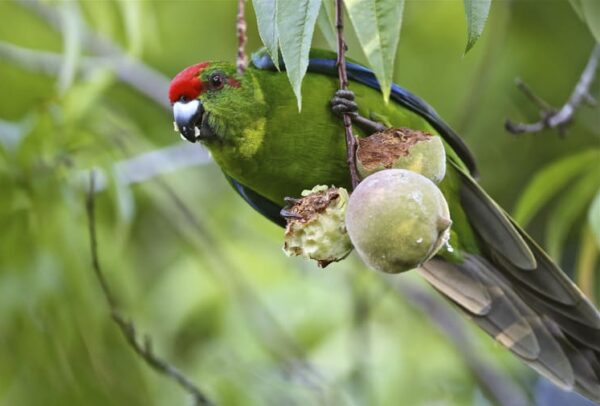
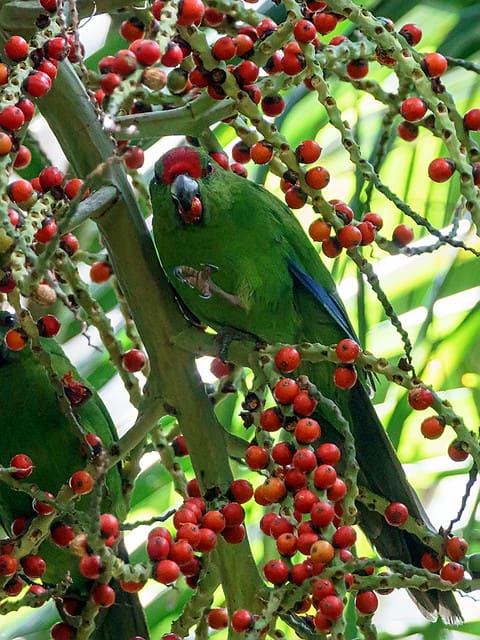
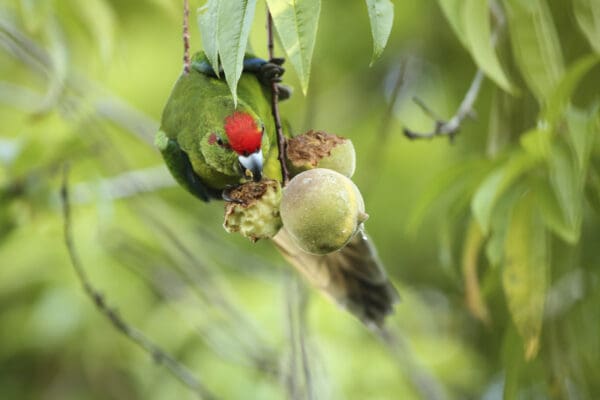
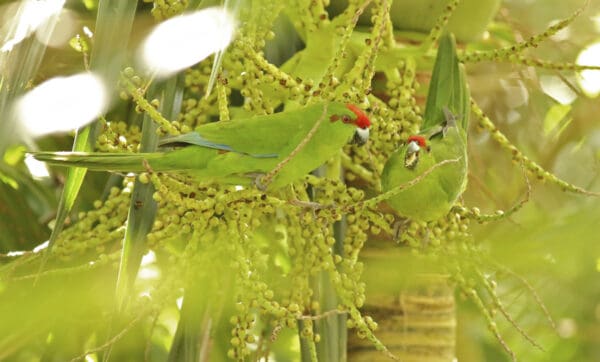
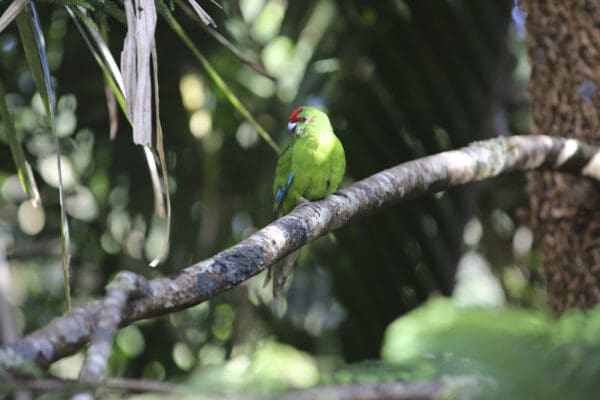

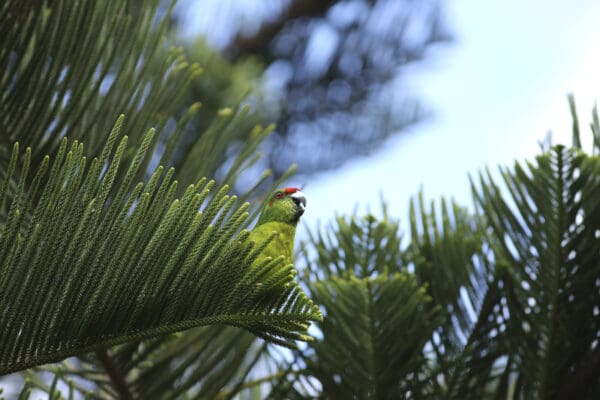
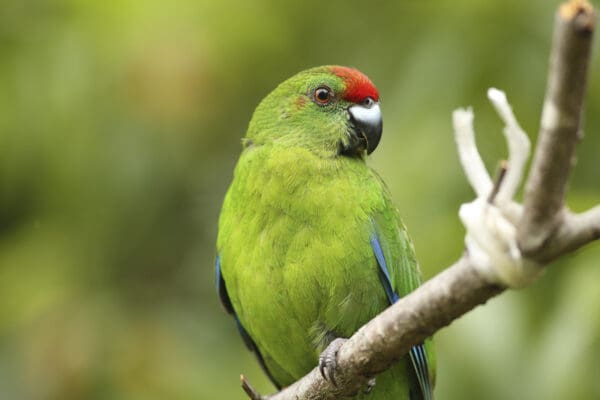
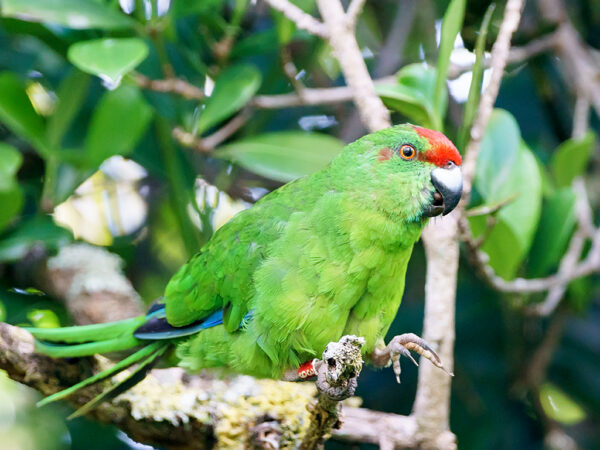
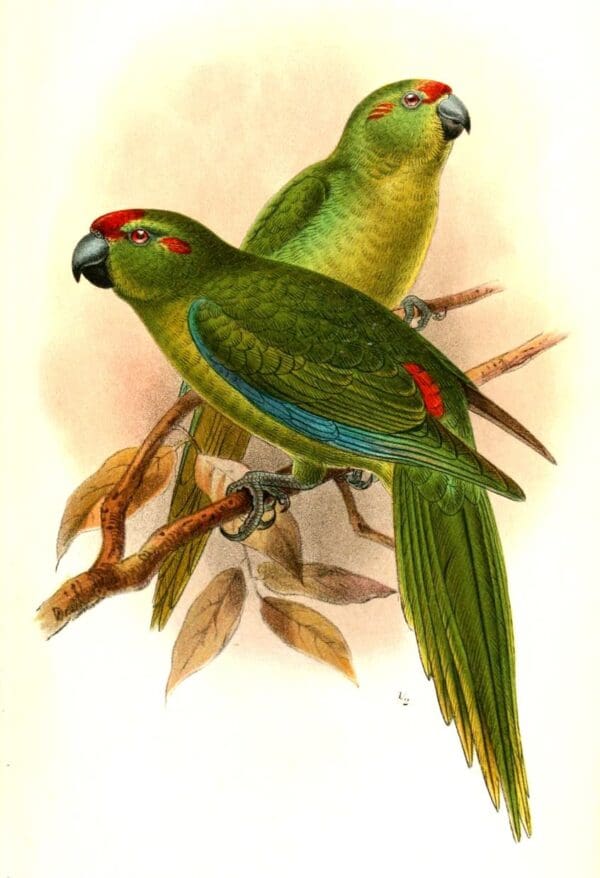
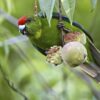
![© David Cook [CC BY-NC 2.0] via Flickr A wild Tasman Parakeet feeds on berries](https://parrots.org/wp-content/uploads/2023/01/wpt_Tasman-Parakeet_1552-12-100x100.jpg)
